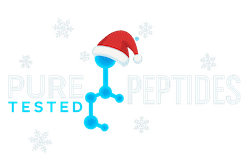GLP-1 Agonist Generations: First, Second, and Third
This article explains what a GLP-1 agonist is, how GLP-1 receptor signaling works, and how first-, second-, and third-generation GLP-1 agonists differ by design and pharmacology. It summarizes mechanisms and representative peer-reviewed evidence only. It does not provide dosages or usage regimens and does not suggest any use outside physician-directed care.
A GLP-1 agonist is a peptide (or peptide-mimetic) that binds and activates the glucagon-like peptide-1 receptor (GLP-1R), an endogenous incretin receptor expressed in pancreatic islets and select extra-pancreatic tissues. GLP-1 agonists are engineered to resist rapid DPP-4 degradation seen with native GLP-1, extending bioactivity in vivo.
Mechanism of GLP-1 Receptor Signaling (Concise)
- Receptor & G-protein coupling: GLP-1R is a class-B GPCR; agonism increases cAMP via Gs, activating PKA/Epac pathways that potentiate glucose-dependent insulin secretion and modulate glucagon secretion.
- Gastric emptying & central signals: GLP-1 agonists slow gastric emptying and engage brainstem/hypothalamic circuits relevant to nutrient handling (mechanistic context).
- Pharmacology matters: Molecule design and half-life determine whether effects predominantly target post-prandial vs fasting glycemia and the extent of receptor coverage across 24 hours. For an accessible review, see Nauck & colleagues, 2020 (PMC).
GLP-1 Agonist Generations: First vs Second vs Third
First-generation GLP-1 agonists (short-acting, “prandial-focused”)
Early GLP-1 agonist designs were short-acting peptides (e.g., exendin-4–derived agents) with brief exposure windows. Their pronounced effect on gastric emptying and post-meal insulin potentiation emphasizes control of post-prandial glucose. Frequent administration was typical in early trials.
Second-generation GLP-1 agonists (long-acting, “basal-plus” coverage)
Next came long-acting GLP-1 agonists (e.g., human-analog backbones or albumin/IgG-based constructs). Prolonged half-life provides steadier receptor engagement, shifting impact toward fasting and overall glycemic measures while retaining prandial benefits. Examples include once-daily analogs and once-weekly depots described in comparative reviews.
Third-generation, GLP-1–centered next-gen incretin agents
The term “third-generation” is used in the literature to describe next-gen incretin agents that build on GLP-1 receptor agonism. Two prominent directions are: (1) higher-potency/longer-acting GLP-1 agonists and alternative formulations, and (2) multi-receptor incretin co-agonists (e.g., GIP/GLP-1 co-agonists) designed to engage complementary receptors in the same metabolic network. For a peer-reviewed overview of a GIP/GLP-1 co-agonist built on a GLP-1R-centered paradigm, see Min et al., 2020 (PMC).
Comparison Table: GLP-1 Agonist Generations
| Dimension | First-generation GLP-1 agonist | Second-generation GLP-1 agonist | Third-generation (GLP-1–centered next-gen incretin) |
|---|---|---|---|
| Design theme | Short-acting, exendin-based peptides | Long-acting human-analog/albumin- or Fc-linked constructs | Higher-potency/alt-form GLP-1 agonists and/or multi-agonists (e.g., GIP/GLP-1) built on GLP-1R engagement |
| Receptor coverage | Brief peaks; strong prandial effect | Sustained exposure; balanced fasting + prandial effects | Prolonged or multi-pathway coverage; GLP-1R plus complementary incretin targets (where applicable) |
| Primary glycemic emphasis | Post-prandial glucose | Overall glycemia (fasting + post-prandial) | Mechanism-dependent; aims to integrate multiple incretin signals |
| Representative development focus | Enzymatic stability vs native GLP-1 | Half-life extension and once-weekly viability | Next-gen potency/formulations; incretin co-agonism strategies |
References (1–2 Peer-Reviewed Links)
